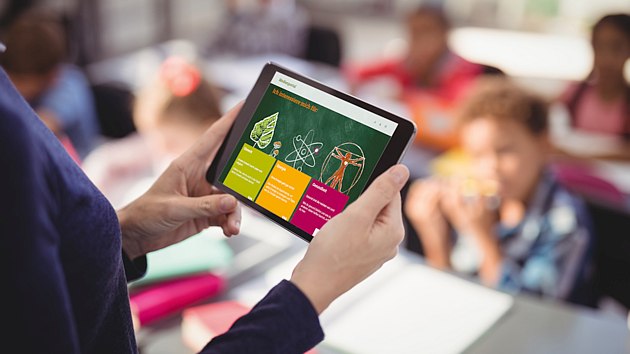Best Advice On Selecting Italian Nursery Teaching Didactics
Wiki Article
What Educational Materials And Information Do Primary And Kindergarten Schools Need?
The primary and kindergarten classes typically require a variety of educational and informational materials to support the development and learning of their students. There are certain materials that may be required like: Curriculum materials - These are materials that are designed to help and improve the learning goals set out in the school's curricula. They may comprise workbooks, textbooks, lesson plans, and various other resources.
Classroom supplies. Materials such as paper, glue, scissors, pencils and more art materials can help children complete their projects.
Educational technology: In the digital age, educational tech such as tablets and computers can provide students with more resources to aid in their education.
Books for Kindergartens and primary school need to offer a variety of appropriate for children's ages that help children develop reading and language skills.
Manipulatives - Blocks, puzzles and various other games can aid in developing children's spatial awareness, problem-solving, and problem-solving abilities.
Visual aids. Visual aids like posters, charts, and maps can help children comprehend and retain important concepts.
Music and Art Materials Instruments, art materials, such as clay, paints or other materials can provide children with artistic outlets and promote self-expression.
Safety supplies - Safety products like first aid kits and fire extinguishers are vital to the well-being and safety of staff and students.
In general, elementary and kindergarten schools require a wide range of educational resources and materials to provide a safe and enjoyable learning environment for students. See the top rated sostegno scuola primaria for more info.
What Educational Materials And Aids To Teach Mathematics Are Recommended By Italian Schools?
Mathematical teaching materials and educational tools can help Italian nursery children develop their spatial and numerical abilities, as well as problem-solving. Here are some examples of materials that can be used to teach counting: Counting manipulatives Beads, bears and blocks aid children to build their ability to count and fine motor skills and hand-eye co-ordination.
Charts and numbers: These charts and cards are a great way to teach kids about numbers and counting. This can include large colorful numbers that are placed on the walls or smaller cards which children can carry.
Shape manipulatives. Shape manipulatives can be useful for children to improve their spatial thinking abilities and to learn about various shapes.
Tools for measuring such as measuring tapes, scales and rulers are helpful for teaching children about comparisons and measurement while also helping to develop their mathematical vocabulary.
Simple puzzles and games Simple puzzles and games like dominoes and matching games and jigsaw puzzles are a great way to aid in the development of children's problem-solving abilities, as well as their attention to detail and concentration.
Technology-based Aids: Technology tools, like tablets that include math games and apps that are educational can engage and motivate children. They also offer additional aids to help them learn.
It is essential to use these materials in a developmentally appropriate way and to ensure that they are safe and appropriate for young children. These materials can be used by caregivers and teachers to design engaging and interactive math-related activities for children to stimulate their curiosity and love of education. Have a look at the recommended schede didattiche matematica for website tips.

What Is The Best Italian Kindergarten Curriculum In The Field Of History?
Italian nurseries might need to use history teaching materials to help students understand the past, develop an understanding of identity and feel a connection with the past. Here are a few possible examples of history materials. Age-appropriate books: publications that focus on historical characters or places and their cultural traditions help children develop a love of history and an appreciation for the past.
Images and artifacts. Artifacts, such as pictures and photographs from different time periods and cultures, can be used to help children better understand the events of history and the ways they lived.
Maps and timelines: Children can learn about history more by studying timelines and maps.
Storytelling - Storytelling has the power to engage and impress children with historical events and people in a fun and memorable way.
Dramatic Play: Dramatic plays help children relive historical occasions and events, as well as learn more about their significance.
Field excursions. Field trip options include visiting local museums, historical sites and other sites that offer an opportunity for hands-on learning and experience.
The materials for history are meant to be age-appropriate and sensitive to the cultural variations. Teachers and caregivers can use these materials to create interactive, engaging activities about the past that inspire curiosity and a love of learning in children. Take a look at the most popular sostegno storia for website recommendations.

What Are The Recommended Maps Of Italy For Italian Elementary Schools?
Geography cards are a great way to introduce basic concepts of geography to young children. Here are a few types of didactic geography cards to take into consideration such as Continents. These cards will help kids learn more about the different continents around the world. They can also help them understand their location, size and other natural characteristics.
Cards with country names: Children can learn more about countries through the use of cards for countries. They will be able to identify the flags, languages and cultures of different countries.
Landmark Cards: The Landmark Cards are a great way to educate children about the natural and well-known landmarks across the globe, as well as their location and significance.
Animal cards are a great method to teach children about the animals, their habitats, their behaviour and their diet.
Weather cards. Children can make use of weather cards to understand different types, and the effects they have on the environment.
Natural resource decks: Natural resource decks can help educate children on the various kinds of resources that are accessible to them and their applications. These include forest, water and minerals.
Choose geography cards that are appropriate for your age, engaging, interactive and appropriate for toddlers. Teachers and caregivers are able to utilize these cards for exciting, interactive activities in geography. They can increase children's curiosity in learning about diverse cultures and different countries. See the most popular materiale didattico geografia sostegno for website tips.

